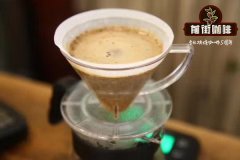What's the quality of Arabica and Robusta? are Yega Chevy red cherries good?

For professional baristas, please follow the coffee workshop (Wechat official account cafe_style)
Many people drink coffee but do not understand how coffee is produced. They often hear "Arabica" and "washing", but do not know what it means. According to experts, in the current species classification, there are about 60 species of coffee, but the two species with economic scale and value are mainly Coffea arabica and Coffea robusta.
But in terms of flavor, Arabica has more carbohydrates and citric acid, more flavor precursors, and more sour and rich taste.
Robusta contains more chlorogenic acid and other polyphenols, which has a strong bitter taste and thick feeling.
Red Cherry: the Red Cherry Project is a project to improve the quality of small-scale farms, mainly to encourage soybean farmers and surprise roasters. Trabocca, the largest coffee bean seller in the Netherlands, invited all Ethiopian farms to produce small batches of beans of about 1500-3000 kg (25,050 bags) before the harvest season. Women can only choose fully 100% ripe red cherries. There is a big difference in coffee flavor. So attentive and industrious Ethiopian women are important drivers of the Red Cherry Project.
Operation Red Cherry is also a reinforcing method, which makes the farm pay more attention to the process of selecting beans. The prices of these coffees are also relatively high. Red Cherry Action has water washing, sun-drying beans, half-washing, half-sun, experimental coffee and so on. The main producing areas are Yegashev, Sidamo, Penga Forest, Lekanti, Ken Bata, Iruba, Hara, Lim, and joined Coroja Golocha in 2011 (near Hara). These are unique and can fully show the flavor of Ethiopian beans. Trabocca will choose from the coffee after receiving it. Farms that have passed the cup test quality test in Ethiopia and the Netherlands will pay a large bonus, with a passing score of more than 88 points to become a good coffee for the Red Cherry program. Trabocca, the promoter of the Red Cherry project, invested all the profits made in the past few years in the cooperative farm. Trabocca stressed that this is a plan with no profit, so the company only uses four people, including the boss and secretary, to carry out the Red Cherry project, and other administrative related matters are supported by the parent company to reduce administrative expenses, and all the profits are returned to the cooperative farm.
Important Notice :
前街咖啡 FrontStreet Coffee has moved to new addredd:
FrontStreet Coffee Address: 315,Donghua East Road,GuangZhou
Tel:020 38364473
- Prev

Colombia coffee taste introduction
Professional barista communication Please pay attention to coffee workshop (Weixin Official Accounts cafe_style) Espresso: Espresso is a type of coffee with strong taste, which is brewed by hot water at 92 degrees Celsius and ground into fine coffee powder at 9bar high pressure. It was invented and developed in Italy, beginning in the early 20th century, but not until 1
- Next

Comparison between Kenyan Coffee and Guatemalan Coffee introduction to Guatemalan Coffee
Professional barista communication please pay attention to the coffee workshop (Wechat official account cafe_style) Guatemalan coffee: Guatemalan coffee, produced in Guatemala, this bean belongs to the bourbon kind of coffee beans, is one of the more sour varieties, mellow and slightly wild taste, the most suitable for mixing coffee. Another crystallization in the land of wisdom that gave birth to the Mayan civilization; that
Related
- Beginners will see the "Coffee pull flower" guide!
- What is the difference between ice blog purified milk and ordinary milk coffee?
- Why is the Philippines the largest producer of crops in Liberia?
- For coffee extraction, should the fine powder be retained?
- How does extracted espresso fill pressed powder? How much strength does it take to press the powder?
- How to make jasmine cold extract coffee? Is the jasmine + latte good?
- Will this little toy really make the coffee taste better? How does Lily Drip affect coffee extraction?
- Will the action of slapping the filter cup also affect coffee extraction?
- What's the difference between powder-to-water ratio and powder-to-liquid ratio?
- What is the Ethiopian local species? What does it have to do with Heirloom native species?

